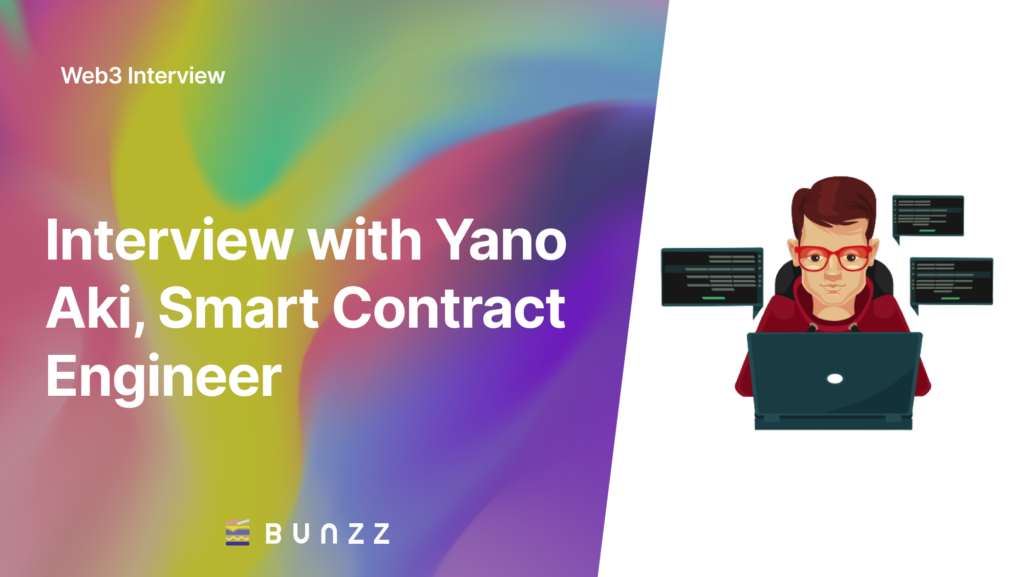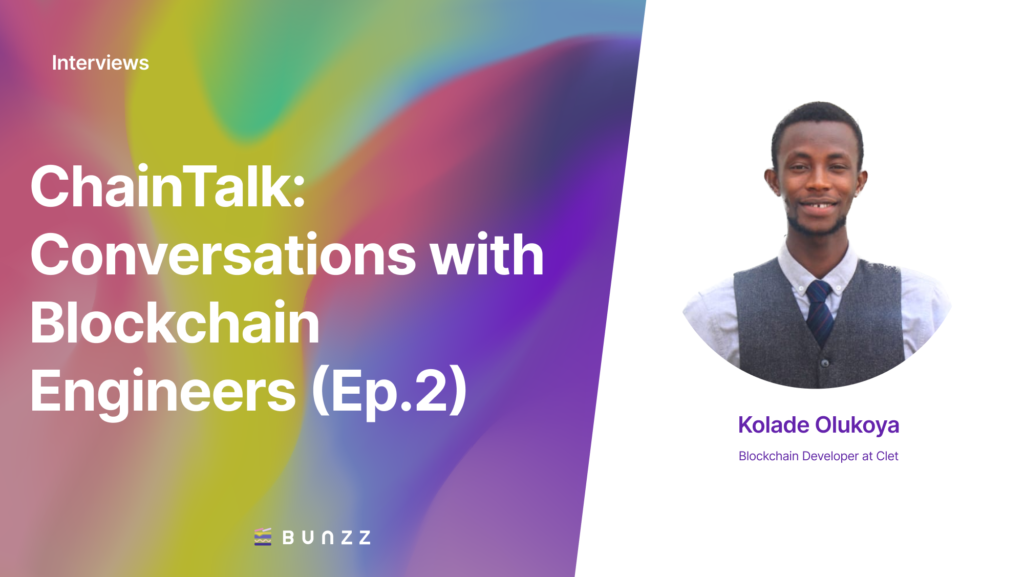Smart contracts have emerged as a powerful tool for creating self-executing contracts with predefined rules and conditions in the rapidly expanding world of blockchain technology and decentralized applications. Escrow smart contracts have grown in popularity as a means of facilitating secure transactions between parties without the use of intermediaries.
In this interview, I spoke with Yano Aki, a smart contract engineer who created an Escrow smart contract for the Bunzz platform. Yano discusses the development process, challenges encountered, and potential applications of the contract in various decentralized applications.
Could you please introduce yourself briefly?
My name is Yano Aki, and I am a smart contract engineer from Japan. I have been working in this field since 2018, and recently joined Bunzz, building the Bunzz ecosystem.
What inspired you to build an Escrow smart contract?
Well, I used to work as a freelancer on Upwork.com, and I noticed that the Escrow module was like a payment process on the site. That inspired me to build an Escrow smart contract, which could be used for all transactions that require payment manipulation by any trusted agency on the blockchain.
What was your approach to defining the logic and rules of the smart contract?
The premise of all transactions is based on trust, and the important thing here is that freelancers and clients already trust the Upwork team. So, in this module, the client and freelancer select the agency they trust and delegate the payment management to him. Essentially, the responsibility for the agency’s malicious behavior lies with the client and freelancer themselves.
Can you walk us through the critical components of the contract and how they work together?
In the escrow smart contract, the client and freelancer select a trusted agency to handle payment management. The agency can be an individual or an organization, and they are responsible for ensuring that the payment is released to the freelancer once the work is completed. The contract uses ReentrancyGuard of openzeppelin to prevent reentrancy attacks.
What challenges did you face during the development process, and how did you overcome them?
The development process for this module was very straightforward, and I didn’t face any significant challenges.
What tools and technologies did you use to build the smart contract, and why did you choose them?
I used the Hardhat framework to build and test the smart contract. Hardhat is a great framework because it makes it easy to write tests and deploy smart contracts on the Ethereum network.
Can you describe the testing and verification process you went through to ensure the contract is secure and working as expected?
We have a team of 5 smart contract engineers, and once anybody creates a module, other devs review the smart contract alongside auditors. I also created a unit test script for the module, which the other devs reviewed. We thoroughly tested the smart contract to ensure that it was secure and working as expected.
What security measures have you implemented to prevent unauthorized access and potential attacks?
To protect the smart contract from a reentrancy attack, I used ReentrancyGuard of openzeppelin. This helped to ensure that the contract was secure and protected from potential attacks.
What kind of DApps can developers build with your Escrow smart contract?
As I mentioned earlier, developers can use this Escrow smart contract for transactions between freelancers and clients. It can also be used for all transactions that require payment manipulation by any trusted agency, such as an individual or an organization. Additionally, it can be used for shipping processes.
How can developers implement the Escrow smart contract into their DApps?
Developers can deploy the Escrow smart contract using the Bunzz platform and integrate it into their own DApps. It’s a pretty straightforward process, and we’ve made it easy for developers to use the smart contract.
What advice do you have for developers looking to build similar smart contracts or what to implement yours into their DApps?
When building an escrow smart contract, it’s essential to correctly define the agency’s role. The escrow process is entirely different depending on the agency’s role and authority, so this definition is crucial.
——
Yano Aki’s experience creating the Bunzz platform’s Escrow smart contract provides valuable insights into the capabilities of smart contract technology. The potential applications of smart contracts are limitless as blockchain technology advances. Yano’s Escrow smart contract is a secure and efficient way to facilitate transactions between parties without intermediaries.
The Bunzz platform provides many options for developers looking to implement similar solutions or integrate existing smart contracts into their decentralized applications, with ready-made smart contracts available. Visit the Bunzz platform to learn more about Yano’s Escrow smart contract and other contract modules available.







